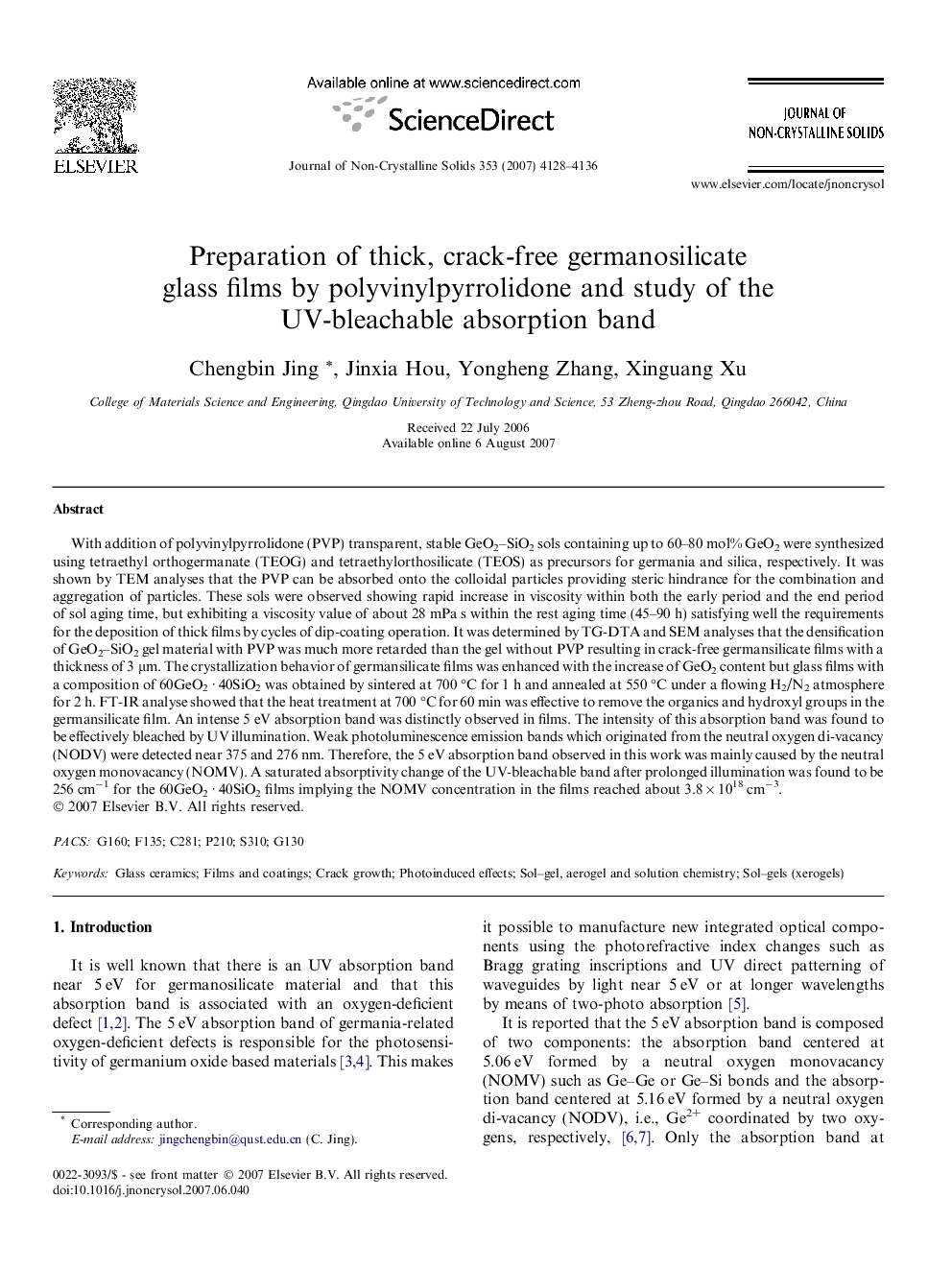| Article ID | Journal | Published Year | Pages | File Type |
|---|---|---|---|---|
| 1484936 | Journal of Non-Crystalline Solids | 2007 | 9 Pages |
With addition of polyvinylpyrrolidone (PVP) transparent, stable GeO2–SiO2 sols containing up to 60–80 mol% GeO2 were synthesized using tetraethyl orthogermanate (TEOG) and tetraethylorthosilicate (TEOS) as precursors for germania and silica, respectively. It was shown by TEM analyses that the PVP can be absorbed onto the colloidal particles providing steric hindrance for the combination and aggregation of particles. These sols were observed showing rapid increase in viscosity within both the early period and the end period of sol aging time, but exhibiting a viscosity value of about 28 mPa s within the rest aging time (45–90 h) satisfying well the requirements for the deposition of thick films by cycles of dip-coating operation. It was determined by TG-DTA and SEM analyses that the densification of GeO2–SiO2 gel material with PVP was much more retarded than the gel without PVP resulting in crack-free germansilicate films with a thickness of 3 μm. The crystallization behavior of germansilicate films was enhanced with the increase of GeO2 content but glass films with a composition of 60GeO2 · 40SiO2 was obtained by sintered at 700 °C for 1 h and annealed at 550 °C under a flowing H2/N2 atmosphere for 2 h. FT-IR analyse showed that the heat treatment at 700 °C for 60 min was effective to remove the organics and hydroxyl groups in the germansilicate film. An intense 5 eV absorption band was distinctly observed in films. The intensity of this absorption band was found to be effectively bleached by UV illumination. Weak photoluminescence emission bands which originated from the neutral oxygen di-vacancy (NODV) were detected near 375 and 276 nm. Therefore, the 5 eV absorption band observed in this work was mainly caused by the neutral oxygen monovacancy (NOMV). A saturated absorptivity change of the UV-bleachable band after prolonged illumination was found to be 256 cm−1 for the 60GeO2 · 40SiO2 films implying the NOMV concentration in the films reached about 3.8 × 1018 cm−3.
